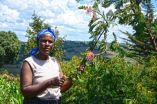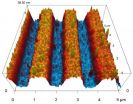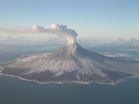(Press-News.org) SAN DIEGO, Calif. (March 17, 2014)—Whenever fishing vessels harvest fish, other animals can be accidentally caught or entangled in fishing gear as bycatch. Numerous strategies exist to prevent bycatch, but data have been lacking on the global scale of this issue. A new in-depth analysis of global bycatch data provides fisheries and the conservation community with the best information yet to help mitigate the ecological damage of bycatch and helps identify where mitigation measures are most needed.
"When we talk about fisheries' catch, we're talking about what fishers are aiming to catch," explained Rebecca Lewison, an ecology professor at San Diego State University's Coastal Marine Institute Laboratory, who led the study with biology professor Larry Crowder of Stanford University's Hopkins Marine Station and Center for Ocean Solutions. "Bycatch are the animals they don't want or mean to catch."
Bycatch may include seabirds, sea turtles and marine mammals. When these animals are accidentally tangled up in fishing lines or nets, nobody wins. It not only harms the local ecological balance, it also damages fishing gear and costs the industry time and money.
While this new analysis illustrates that bycatch is a complex, global process, the good news is that several strategies already exist to prevent bycatch, many of them developed by the fishing industry. For example, by varying the depth at which lines and nets are deployed, by using specially designed lures and hooks, and by employing turtle excluder devices, fisheries have increased target catch and reduced bycatch.
"Some of the earliest bycatch issues involved marine mammals taken in tuna nets and shrimp trawls that drowned sea turtles," Crowder said. "The problems were ultimately solved by scientists who clearly defined the problems and by managers and fishermen who sought innovative fishing methods to allow fisheries and protected species to coexist."
In the past, much of the research done in this area focused on specific species or on specific fleets. While those snapshots have been important and useful, Lewison said, they've missed the larger, integrated picture.
"If you're a turtle, you probably don't care about what country, or what type of gear or which fleet catches you," Lewison said. "You just care that you got caught."
That's the attitude Lewison and her colleagues applied to their latest study, published March 17 in the Proceedings of the National Academy of Sciences. As part of a research initiative funded by the Gordon and Betty Moore Foundation, the scientists looked at hundreds of peer-reviewed studies, reports and symposia proceedings published between 1990 and 2008 to obtain a global perspective on what kinds of animals were being caught, where they were being caught, and the types of gear in which they were trapped. The researchers then compiled all of this information into a single comprehensive map and dataset.
"We call this the whole enchilada," Lewison said. "It highlights the importance of looking at the bycatch issue across different species, fishing gears and countries. When you do that, it is clear that to address bycatch, fishing nations need to work together to report and mitigate bycatch. No single country can fix this. "
The study also revealed gaps in the available bycatch data, such as the lack of information on small-scale and coastal fisheries and from many ocean regions that are heavily fished by commercial fleets.
"Industry has taken the lead in developing mitigation in many countries, but these measures aren't used everywhere," Crowder said. "The fact is that as long as we have a fishing industry, we're going to have an ecological footprint. We need to use the best-available data, science and technology to reduce that footprint as much as we can."
INFORMATION:
Global problem of fisheries bycatch needs global solutions
New analysis reveals the complex and interconnected nature of the accidental capture of marine megafauna in across the world
2014-03-18
ELSE PRESS RELEASES FROM THIS DATE:
New hope for early detection of stomach cancer
2014-03-18
University of Adelaide research has provided new hope for the early detection of stomach cancer with the identification of four new biomarkers in the blood of human cancer patients.
Stomach or gastric cancer is the fourth most common cancer in the world and the second leading cause of death due to cancer.
"Stomach cancer is typically without symptoms in the early stages so most cancers are not diagnosed until the later stages, and the survival rates are therefore low," says Associate Professor Peter Hoffmann, project leader and Director of the University's Adelaide ...
Chicken bones tell true story of Pacific migration
2014-03-18
Did the Polynesians beat Columbus to South America? Not according to the tale of migration uncovered by analysis of ancient DNA from chicken bones recovered in archaeological digs across the Pacific.
The ancient DNA has been used to study the origins and dispersal of ancestral Polynesian chickens, reconstructing the early migrations of people and the animals they carried with them.
The study, led by the University of Adelaide's Australian Centre for Ancient DNA (ACAD) and published today in Proceedings of the National Academy of Sciences USA, reveals that previous claims ...
Hubble revisits the Monkey Head Nebula for 24th birthday snap
2014-03-18
To celebrate its 24th year in orbit, the NASA/ESA Hubble Space Telescope has released a beautiful new image of part of NGC 2174, also known as the Monkey Head Nebula. This colourful region is filled with young stars embedded within bright wisps of cosmic gas and dust.
NGC 2174 lies about 6400 light-years away in the constellation of Orion (The Hunter). Hubble previously viewed this part of the sky back in 2001, creating a stunning image released in 2011, and the space telescope has now revisited the region to celebrate its 24th year of operation.
Nebulae are a favourite ...
Crop intensification and organic fertilizers can be a long-term solution to perennial food shortages in Africa
2014-03-18
Farmers in Africa can increase their food production if they avoid over dependence on chemical fertilizers, pesticides and practice agricultural intensification - growing more food on the same amount of land – using natural and resource-conserving approaches such as agroforestry.
According to scientists at the World Agroforestry Centre (ICRAF), crop production in Africa is seriously hampered by the degradation of soil fertility, water and biodiversity resources. Currently, yields for important cereals such as maize have stagnated at 1 tone per hectare. Climate change ...
Researchers change coercivity of material by patterning surface
2014-03-18
Researchers from North Carolina State University have found a way to reduce the coercivity of nickel ferrite (NFO) thin films by as much as 80 percent by patterning the surface of the material, opening the door to more energy efficient high-frequency electronics, such as sensors, microwave devices and antennas.
"This technique reduces coercivity, which will allow devices to operate more efficiently, reducing energy use and improving device performance," says Goran Rasic, a Ph.D. student at NC State and lead author of a paper describing the work. "We did this work on NFO ...
New research links body clocks to chronic lung diseases
2014-03-18
The body clock's natural rhythm could be utilized to improve current therapies to delay the onset of chronic lung diseases.
Scientists at The University of Manchester have discovered a rhythmic defence pathway in the lung controlled by our body clocks, which is essential to combat daily exposure to toxins and pollutants.
Internal biological timers (circadian clocks) are found in almost all living things driving diverse processes such as sleep/wake cycles in humans to leaf movement in plants. In mammals including humans, circadian clocks are found in most cells and ...
Earthquakes caused by clogged magma a warning sign of eruption, study shows
2014-03-18
New research in Geophysical Research Letters examines earthquake swarms caused by mounting volcanic pressure which may signal an imminent eruption. The research team studied Augustine Volcano in Alaska which erupted in 2006 and found that precursory earthquakes were caused by a block in the lava flow.
36 hours before the first magmatic explosions, a swarm of 54 earthquakes was detected across the 13-station seismic network on Augustine Island. By analyzing the resulting seismic waves, the authors found that the earthquakes were being triggered from sources within the ...
Eat more, die young: Why eating a diet very low in nutrients can extend lifespan
2014-03-18
A new evolutionary theory in BioEssays claims that consuming a diet very low in nutrients can extend lifespan in laboratory animals, a finding which could hold clues to promoting healthier ageing in humans.
Scientists have known for decades that severely restricted food intake reduces the incidence of diseases of old age, such as cancer, and increases lifespan.
"This effect has been demonstrated in laboratories around the world, in species ranging from yeast to flies to mice. There is also some evidence that it occurs in primates," says lead author, Dr Margo Adler, ...
Follow the ant trail for drug design
2014-03-18
This news release is available in German. The path to developing new drugs is a long one. If a target is identified for a new active agent – for instance a particular protein that plays a key role in a disease – an active molecule that binds to the target must then be developed. Pharmaceutical companies trawl through their collections of chemicals for substances that act on the target protein in the desired fashion. However, these compounds are often just the starting point for a long process of adjustment and testing. Chemists use computer simulations to design new ...
Democrats, Republicans see each other as mindless -- unless they pose a threat
2014-03-18
We are less likely to humanize members of groups we don't belong to—except, under some circumstances, when it comes to members of the opposite political party. A study by researchers at New York University and Harvard Business School suggests that we are more prone to view members of the opposite political party as human if we view those individuals as threatening.
"It's hardly surprising that we dehumanize those who are not part of our groups," says Jay Van Bavel, an assistant professor in NYU's Department of Psychology and one of the study's co-authors. "However, what ...
LAST 30 PRESS RELEASES:
First ‘Bible map’ published 500 years ago still influences how we think about borders
Why metabolism matters in Fanconi anemia
Caribbean rainfall driven by shifting long-term patterns in the Atlantic high-pressure system, study finds
Potential treatment to bypass resistance in deadly childhood cancer
RSV vaccines could offer protection against asthma
Group 13 elements: the lucky number for sustainable redox agents?
Africa’s forests have switched from absorbing to emitting carbon, new study finds
Scientists develop plastics that can break down, tackling pollution
What is that dog taking? CBD supplements could make dogs less aggressive over time, study finds
Reducing human effort in rating software
Robots that rethink: A SMU project on self-adaptive embodied AI
Collaborating for improved governance
The 'black box' of nursing talent’s ebb and flow
Leading global tax research from Singapore: The strategic partnership between SMU and the Tax Academy of Singapore
SMU and South Korea to create seminal AI deepfake detection tool
Strengthening international scientific collaboration: Diamond to host SESAME delegation from Jordan
Air pollution may reduce health benefits of exercise
Ancient DNA reveals a North African origin and late dispersal of domestic cats
Inhibiting a master regulator of aging regenerates joint cartilage in mice
Metronome-trained monkeys can tap to the beat of human music
Platform-independent experiment shows tweaking X’s feed can alter political attitudes
Satellite data reveal the seasonal dynamics and vulnerabilities of Earth’s glaciers
Social media research tool can lower political temperature. It could also lead to more user control over algorithms.
Bird flu viruses are resistant to fever, making them a major threat to humans
Study: New protocol for Treg expansion uses targeted immunotherapy to reduce transplant complications
Psychology: Instagram users overestimate social media addiction
Climate change: Major droughts linked to ancient Indus Valley Civilization’s collapse
Hematological and biochemical serum markers in breast cancer: Diagnostic, therapeutic, and prognostic significance
Towards integrated data model for next-generation bridge maintenance
Pusan National University researchers identify potential new second-line option for advanced biliary tract cancer
[Press-News.org] Global problem of fisheries bycatch needs global solutionsNew analysis reveals the complex and interconnected nature of the accidental capture of marine megafauna in across the world




